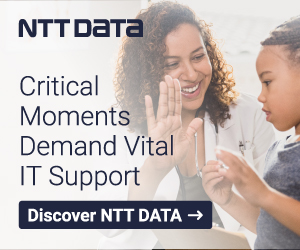By Marc Marlin
In the 1980’s action television show “The A-Team,” the team’s leader, Colonel John “Hannibal” Smith, with cigar in tow would frequently quote, “I love it when a plan comes together.” The Government contracting market, to include those health-oriented end-markets welcomed 2021 with renewed enthusiasm. This past January, a new Presidential Administration took office with a focus on several domestic policy initiatives; significant momentum was being made around the COVID-19 vaccine and roll-out; and merger and acquisition momentum was strong following a multi-year peak in the deal announcements for Government services firms in 2020, notwithstanding the onslaught of COVID impact during the year. 2021 M&A activity has met or exceeded many expectations, with Federal health clearly back “above the fold.”
For the past few years, defense and intelligence priorities were front and center across the Government contracting landscape. Budgets were strong in these areas, as was the news cycle. However, behind the headlines was also a burning desire across the Federal civilian and health landscapes around improved service for Veterans, digital transformation, and citizen engagement. Market players of all sizes have been evolving their strategic roadmaps in these areas, both organically and inorganically, while small and midsized firms were driving innovation and scaling. Departments such as Agriculture (USDA) and Homeland Security (DHS) were pioneering programs to leverage commercial low-code, no-code platforms such as Salesforce, and new approaches to modernization and scaling technology using DevSecOps. The Department of Health and Human Services (HHS) was embracing a roadway to the cloud, data science and bioinformatics. Early cycle M&A transactions such as Accenture’s acquisition of Phase One in 2017; NTT’s acquisition of NETE in 2019; and DLH’s acquisition of S3 in 2019 were appetizers to an increasingly strong M&A appetite around Federal health and broader Federal civilian M&A activity through 2020 and into 2021.
As evidence of the reemphasis on Federal health, the FY2022 budget request highlights key HHS priorities to include public health preparedness, health equity, biomedical research, reducing maternal mortality and morbidity, and ending the opioid crisis, all supported by more modern and future-focused IT systems.
The market has experienced a bit of the perfect storm (with a positive context) at the intersection of market interest by private equity firms and corporate buyers, a hearty population of growing mid-sized services firms, ample investment capital/financing options, and strong macro budget support.
2021 M&A activity across the Federal health sector has been extremely active by buyers and sellers of all sizes, and that covers the entire landscape. Federal health-related transactions have generally touched on many market deal announcements. However, with total M&A announcements in 2021 likely exceeding the 130+ decade high of announcements in 2020, Federal health M&A activity is also positioned for new highs. The M&A activity touches nearly all the end markets given the consensus by many that budget support and mission importance for this segment have longevity. We’ve seen a renewed interest and focus on the Department of Veterans Affairs (VA), consistent with the aforementioned focus on serving the Veteran. While “Kingdomware” cooled M&A focus in this segment for a bit, we’ve seen Maximus’ acquisition of Veteran Evaluation Services, Inc. for more than $1 billion; Booz Allen’s $725 million acquisition of Liberty IT; SAIC’s $250 million acquisition of Halfaker & Associates; and ASGN ECS’ acquisition of ERPi in 2021 reaffirm enthusiasm for this customer set. In the middle market, we’ve seen LMI acquire digital transformation and public health-focused firm Suntiva; Customer Value Partners’ acquisition of Atlas Research positioning it to be a premier mid-tier comprehensive Healthcare solutions and citizen services consulting and systems integration firm; and the acquisition of Salient by Welsh Carson backed GovCIO. Looking over the horizon, with strong market buzz around CIO-SP4 and the opportunities that it may bring on the organic side, there is continued optimism for M&A activity and value creation opportunities across Federal health well into 2022. While 2021 brought a new light to the exhaustion of 2020, a repeat market performance of 2021 in 2022 may be welcomed with open arms, budgetary dollars, and robust M&A spend. The market loves it when a plan comes together.
About Marc Marlin
 Marc Marlin is a Managing Director at KippsDeSanto & Co., an investment bank focused on the aerospace/defense, and Government technology solutions sectors. Marc has a broad base of experience in providing transaction advisory services, with a particular focus on mergers and acquisitions for professional services and software companies. Past clients include Managed Care Advisors, DLH Corporation, General Dynamics, Magellan Health, and Ace Info Solutions, among others.
Marc Marlin is a Managing Director at KippsDeSanto & Co., an investment bank focused on the aerospace/defense, and Government technology solutions sectors. Marc has a broad base of experience in providing transaction advisory services, with a particular focus on mergers and acquisitions for professional services and software companies. Past clients include Managed Care Advisors, DLH Corporation, General Dynamics, Magellan Health, and Ace Info Solutions, among others.
Other featured articles from this year’s edition are available here.





